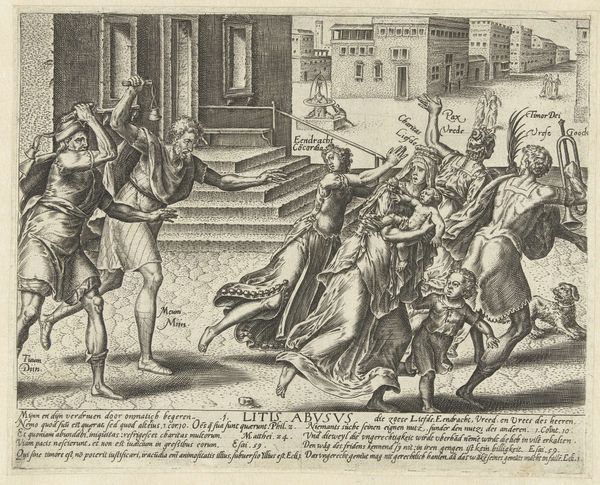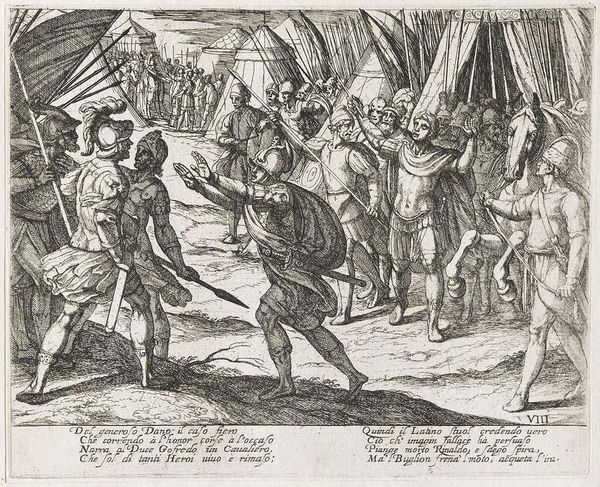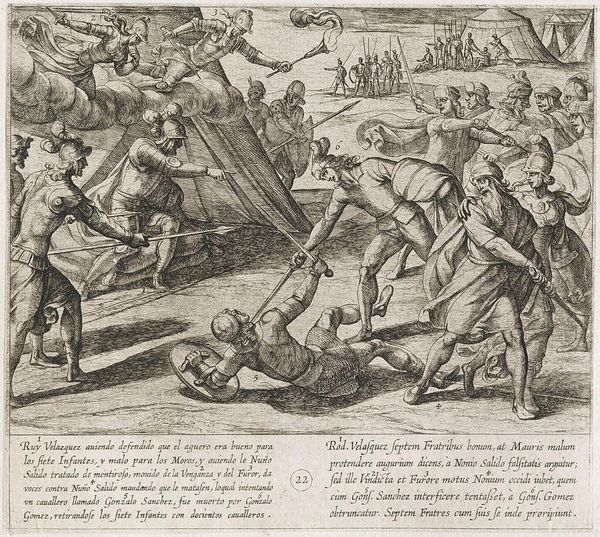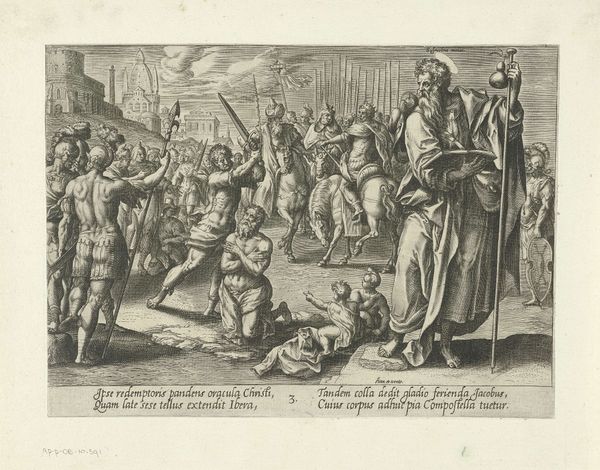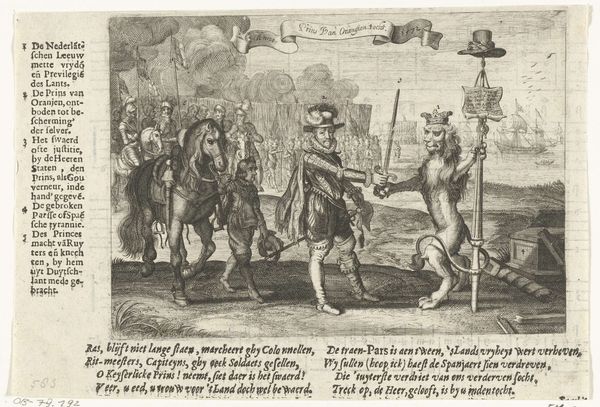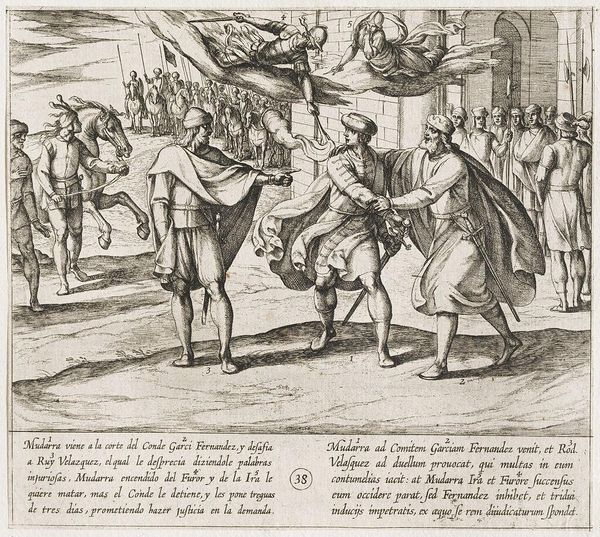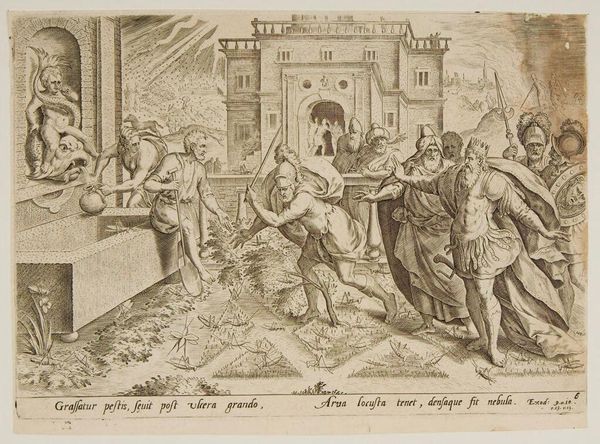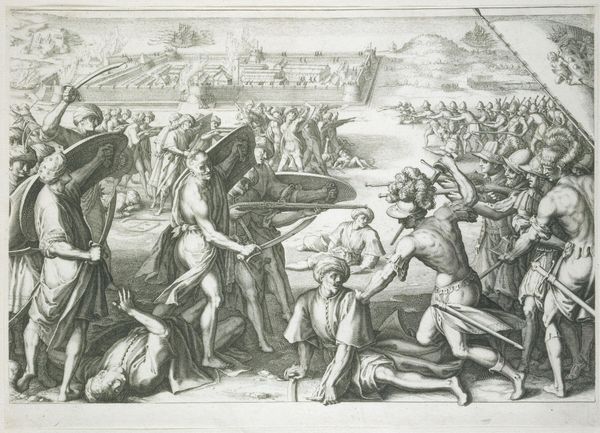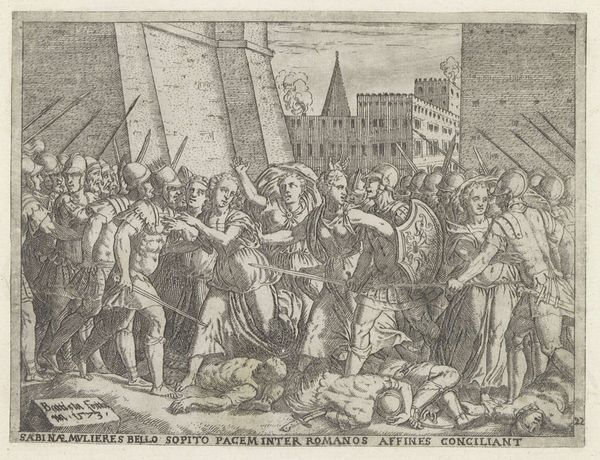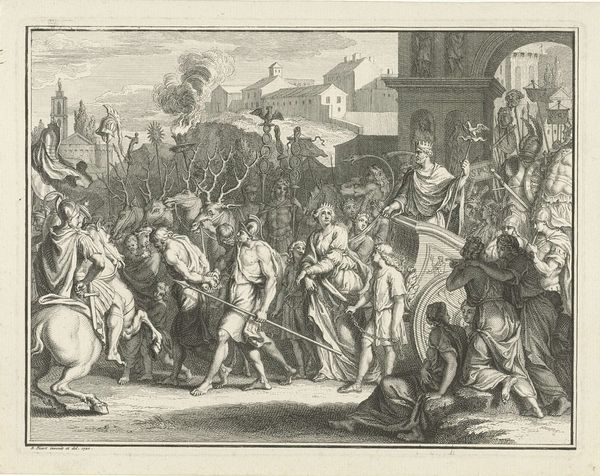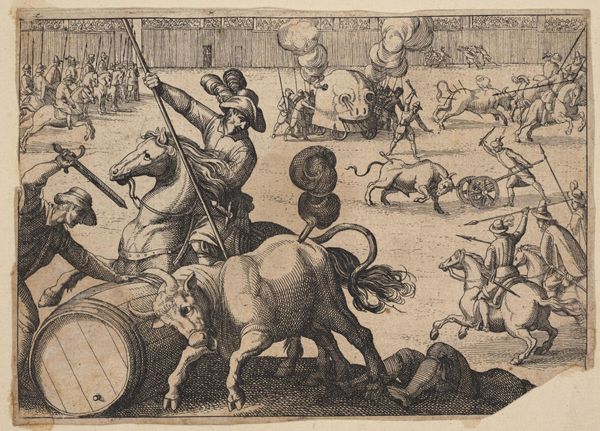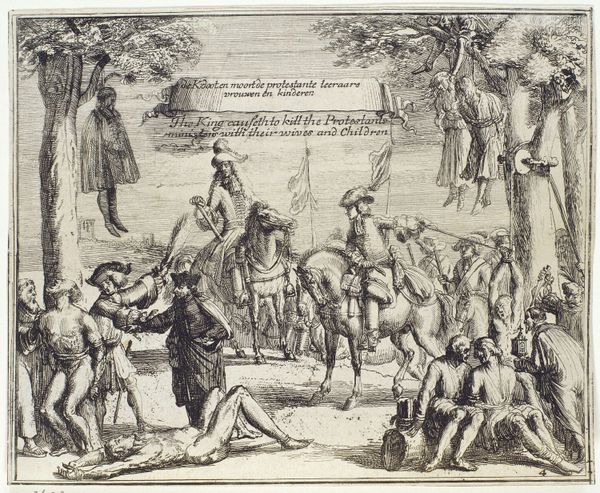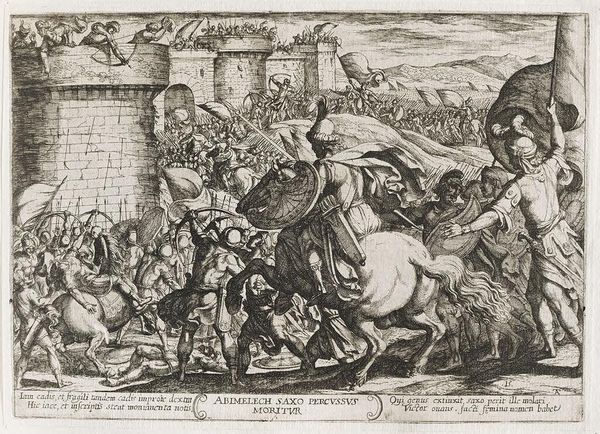
print, engraving
#
narrative-art
# print
#
mannerism
#
figuration
#
romanesque
#
history-painting
#
italian-renaissance
#
engraving
Dimensions: height 144 mm, width 182 mm
Copyright: Rijks Museum: Open Domain
Editor: We’re looking at "Romulus bevrijdt zijn broer Remus" from 1572-1573, an engraving by Giovanni Battista Fontana. It feels so dramatic, like a staged performance of violence, but the printmaking medium makes it seem almost like propaganda too. What’s your take? Curator: Look closely at the production of this print, an engraving. It speaks to the accessibility of images in that era. The act of engraving, a skilled labor, made the myth of Romulus and Remus, figures steeped in social, political, and familial turmoil, consumable. This isn’t just art, it’s a carefully manufactured statement about power and lineage, printed in multiples and circulated. Consider the role of patronage and workshop practices in its creation, too. What sort of statement was the artist trying to create through print? Editor: So, the medium itself highlights its potential impact on the public? Curator: Exactly. Engravings democratized imagery. Suddenly, potent narratives weren't confined to frescoes in palaces. Think about the labor involved in each stage: the initial design, the painstaking carving into the metal plate, the printing process. These actions highlight the material means used to spread certain ideas, which can shift the way society understands it. Editor: That's fascinating! I was initially just thinking about the subject matter, but the means of production really shifts the meaning. Thank you for illuminating the process and its impact. Curator: Absolutely! Thinking materially helps us ground art in its messy, complex reality and societal conditions, and not just in some ideal of aesthetic genius or divine inspiration.
Comments
No comments
Be the first to comment and join the conversation on the ultimate creative platform.
